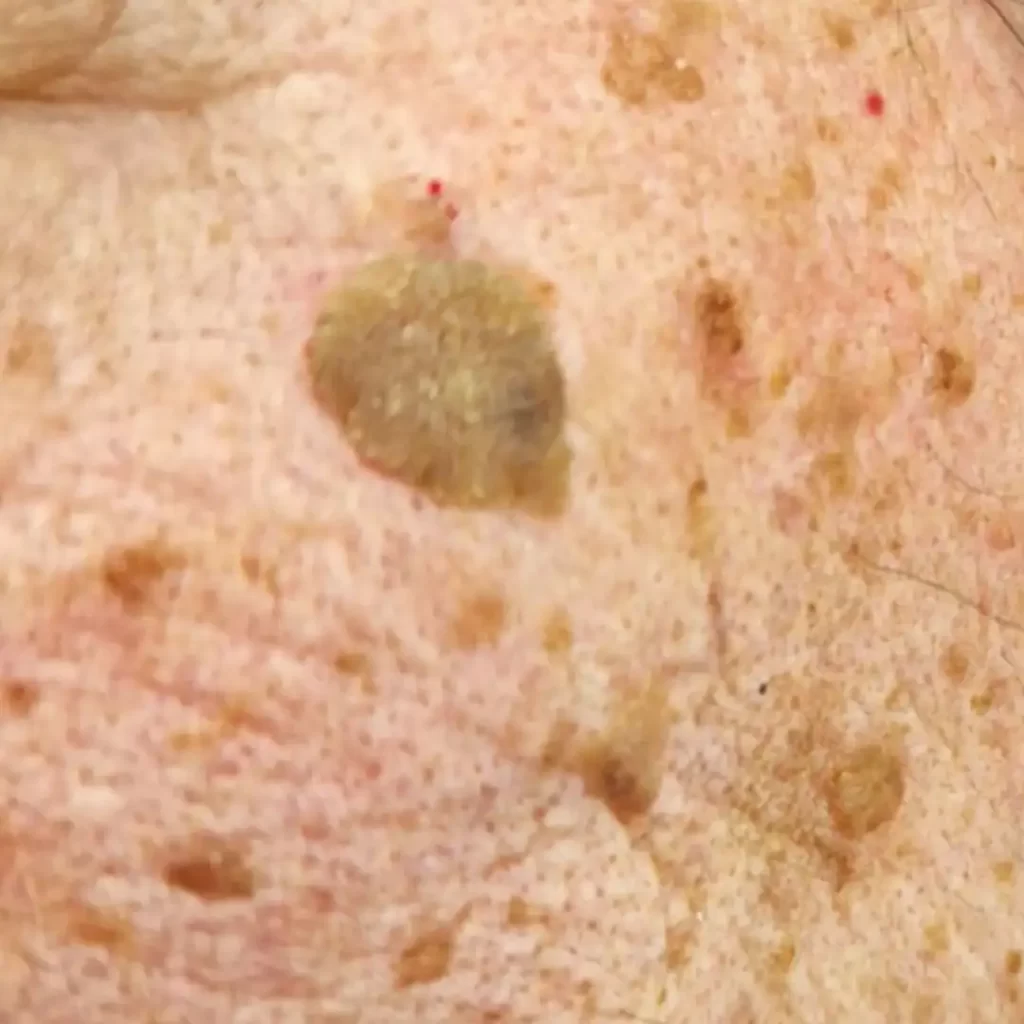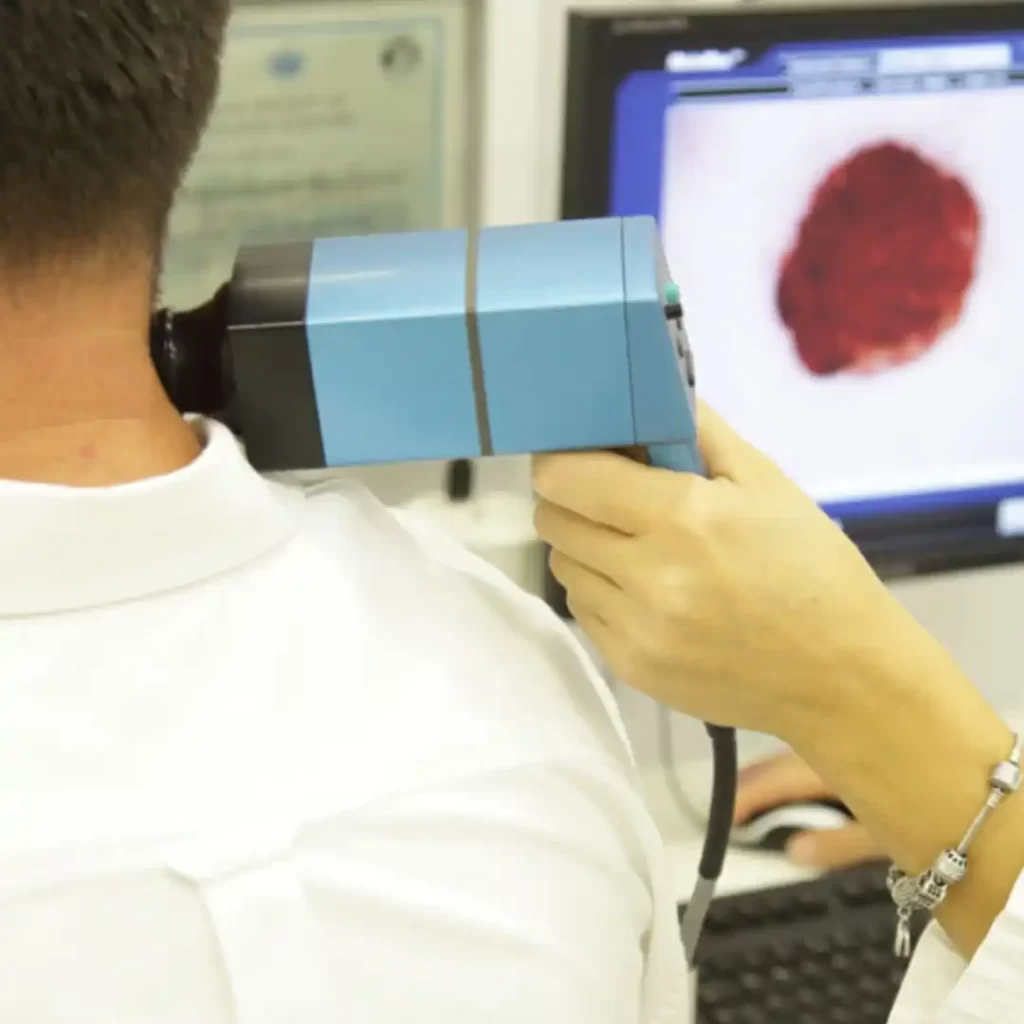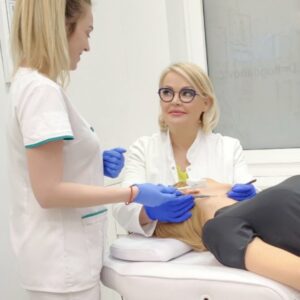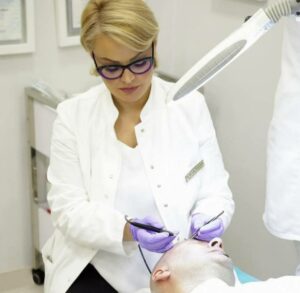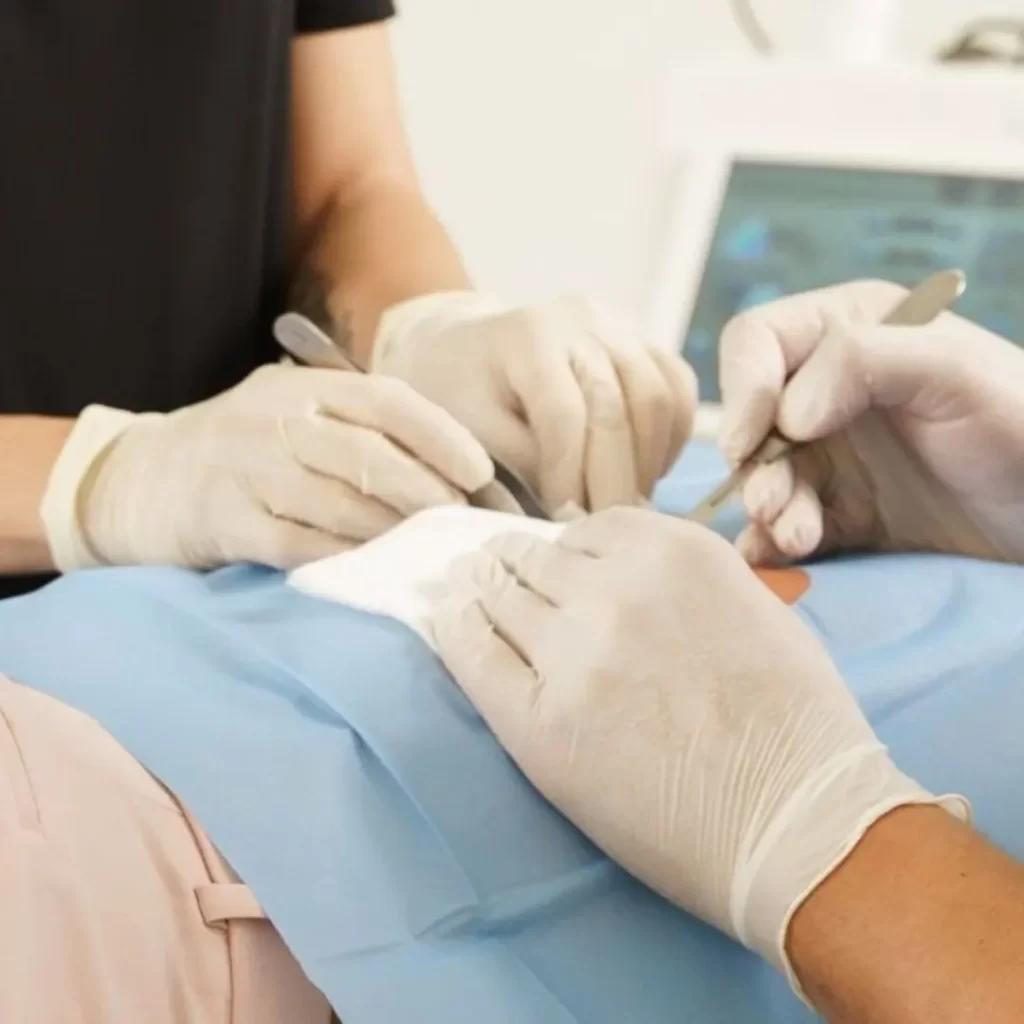A free examination by a specialist in dermatology or cosmetic surgery should be scheduled if you notice any changes in the keratosis such as wetting, ulceration or infection.
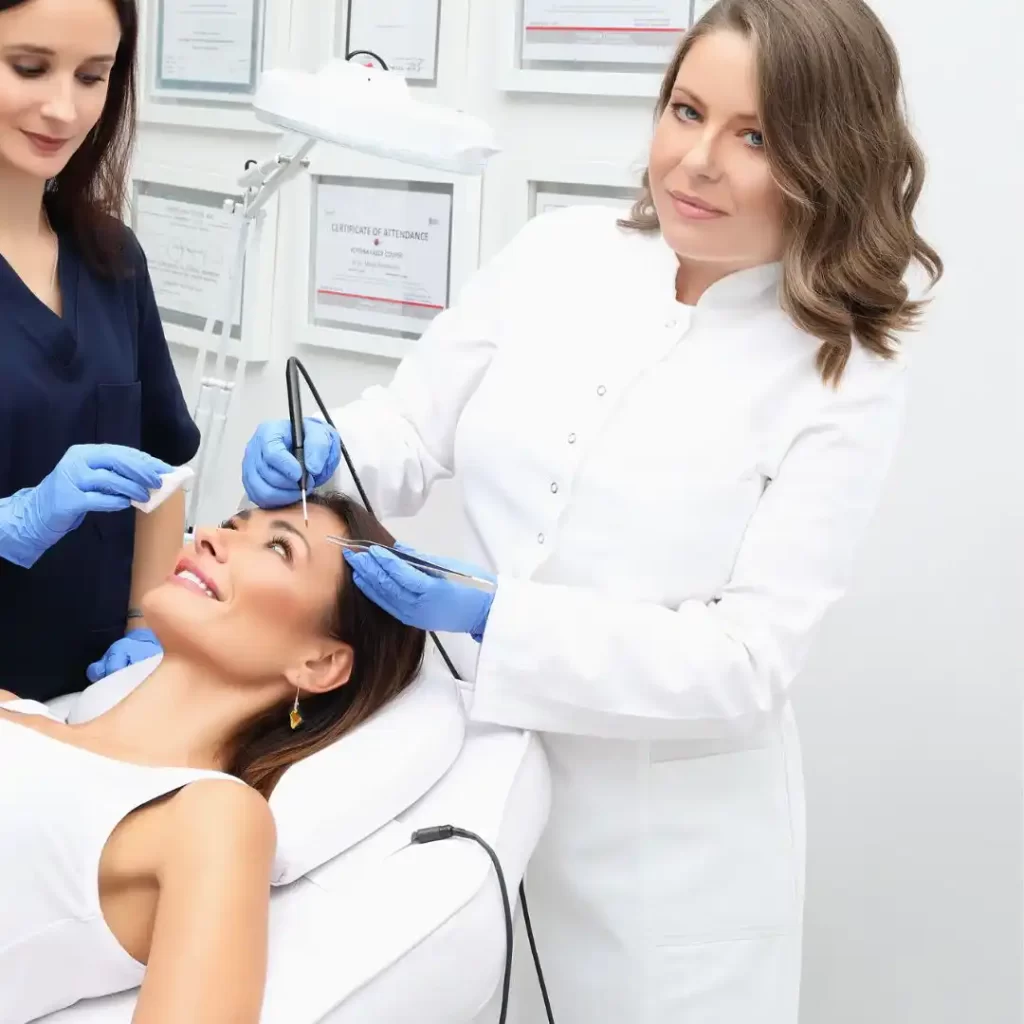
Based on the examination, our doctor assesses whether it is necessary:
- removal of keratosis by radio wave technique,
- by laser method or
- possibly with a classic surgical method.
Of course, it is possible to schedule the removal of keratoses for aesthetic reasons as well.
Free consultations for the removal of keratoses at the Diva Polyclinic
You can schedule a FREE consultation for the removal of keratosis in Belgrade with the doctors of the polyclinic Diva Dr. Bogdanović in one of our polyclinics or specialist dermatology offices:
What is seborrheic keratosis?
How can keratoses be removed?
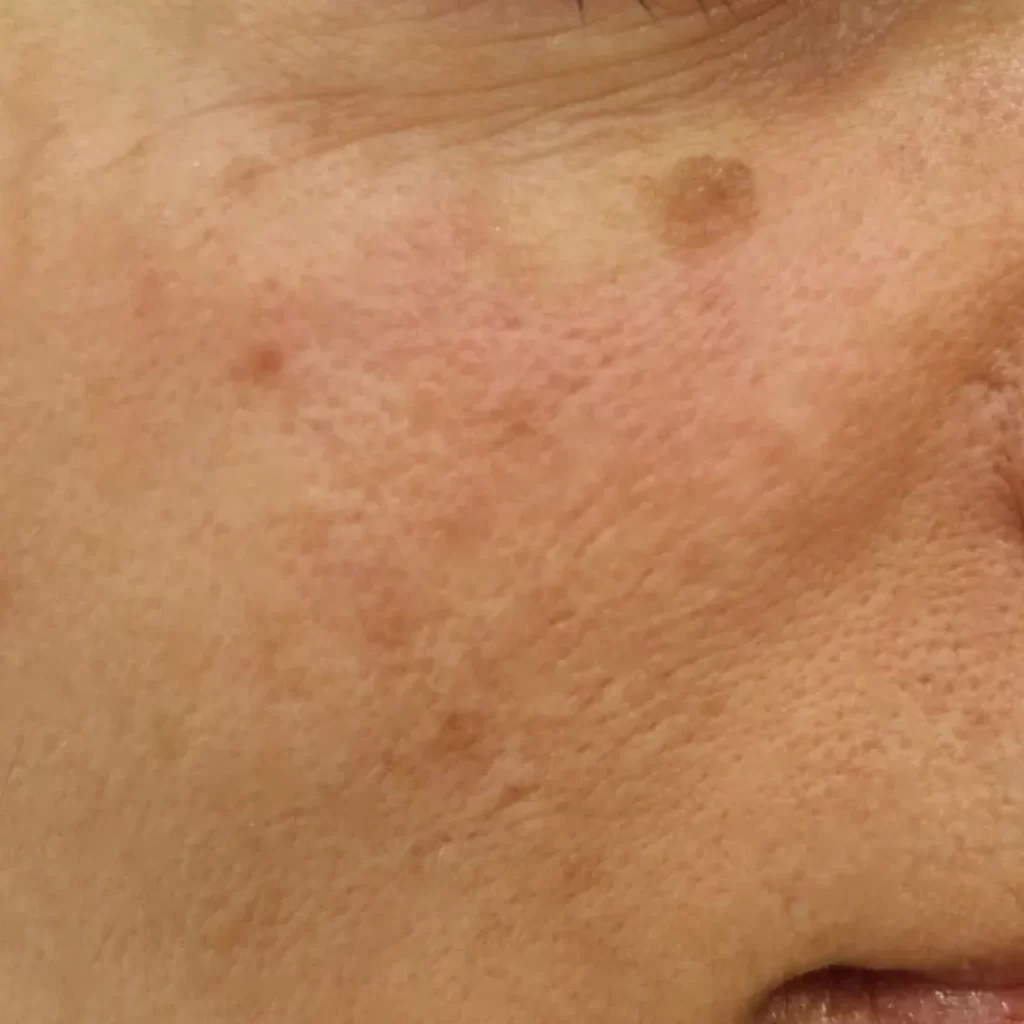
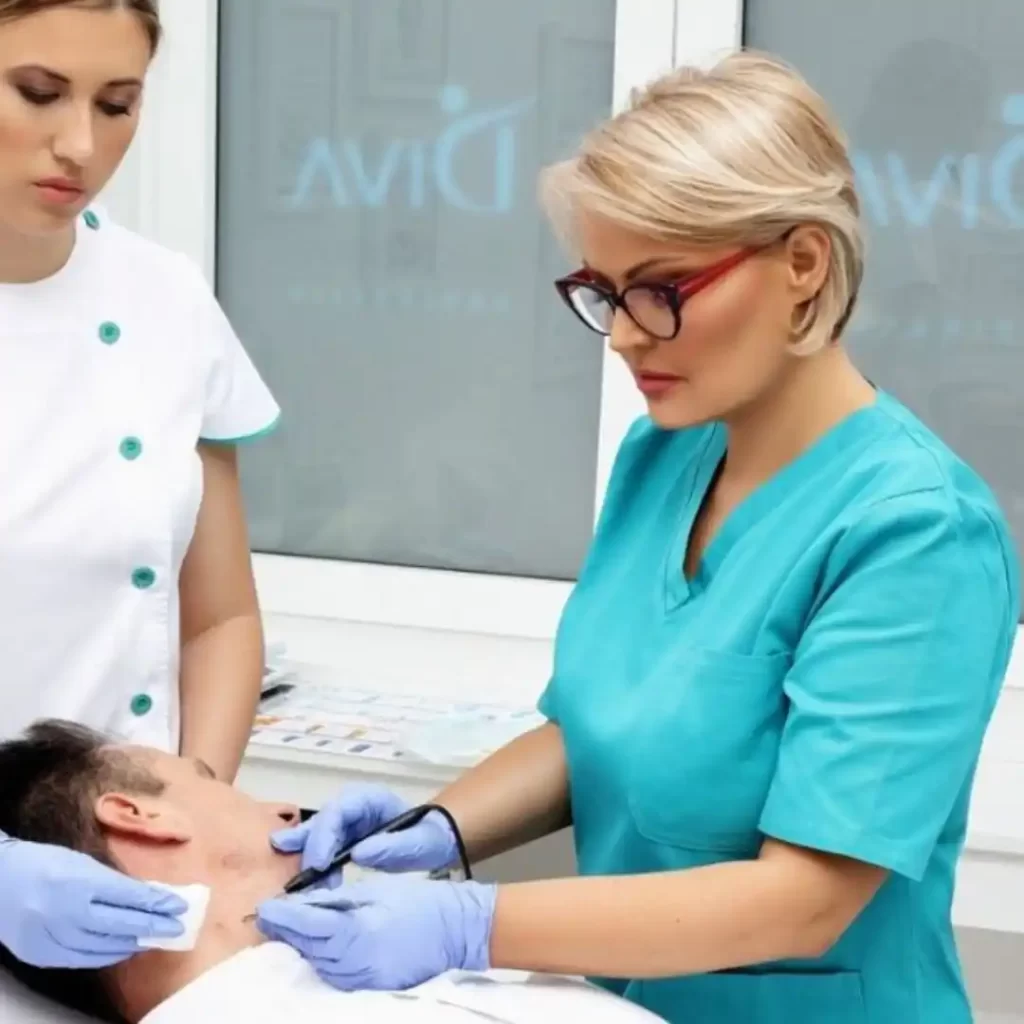
- laser,
- radio wave method
- surgical intervention.
- liquid nitrogen,
- superficial electrocoagulation,
- curettage.
Which method for removing keratoses gives excellent results?
Adequate methods for removing keratoses in clinical practice have proven to be:
- radio wave technology,
- laser removal of keratoses,
- surgical intervention, in larger ones.
Why is the removal of keratoses with radio waves the first choice of specialist doctors at the Diva Polyclinic?
When removing keratoses with radio waves
- no seams,
- the procedure takes a short time,
- and the scars are almost imperceptible.
That is why this is a frequent method of choice for both patients and specialist doctors.
Why remove keratoses with radio waves?
How long does the removal of keratoses with the radio wave method take and how is it performed?
In the Diva Polyclinic, the removal of keratoses with this method begins with the application of a local anesthetic in the form of a cream. After it starts working, the procedure takes a short time, about half a minute per change.
Removal of keratoses with radio waves is:
- very comfortable,
- efficient,
- painless (anesthesia in the form of a cream is used),
- WITHOUT blood,
- WITHOUT seams,
- and lasts a short time – from 20 to 40 seconds per change.
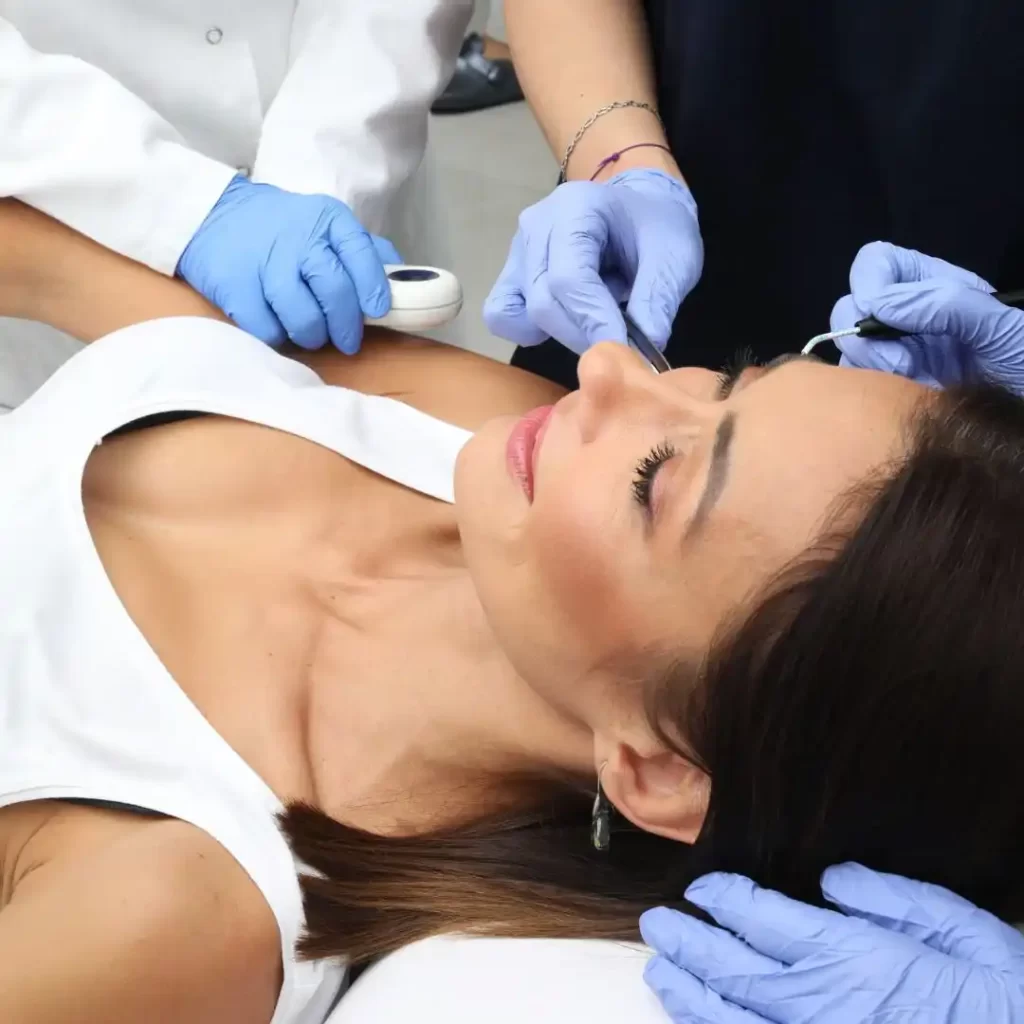
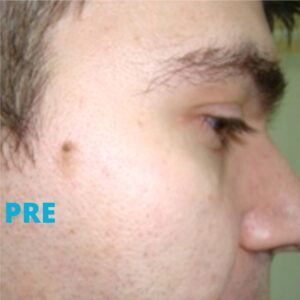
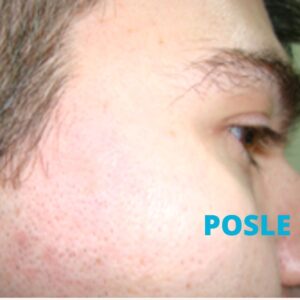
Recovery and care after removal of keratoses using the radio wave method
After the procedure, no special care is needed for the place where the keratosis was before removal. It is important to keep the region where it was located clean, and the specialist doctor will instruct you on whether it is necessary and how and how much to use one of the creams that you receive after the procedure at the Diva Polyclinic.
Why is laser removal of keratoses the optimal technique in selected cases at the Diva Polyclinic?
Removal of seborrheic keratoses by ablative Erbium Yag laser is effective with treatment with
- short recovery time within 7 to 10 days,
- good cosmetic results
- and minimal recurrence rate.
That is why this method is recommended by the specialist doctor at the Diva Polyclinic.
Which laser is used to remove seborrheic keratosis at DIVA Polyclinic?
In the DIVA polyclinic, keratoses are removed with a new generation fractionated Er:Yag laser.
The fractionated Er:Yag laser is a balanced technique in the removal of keratoses with a very short recovery period, and it has combined the comfort of non-ablative and the effect of surgical lasers.
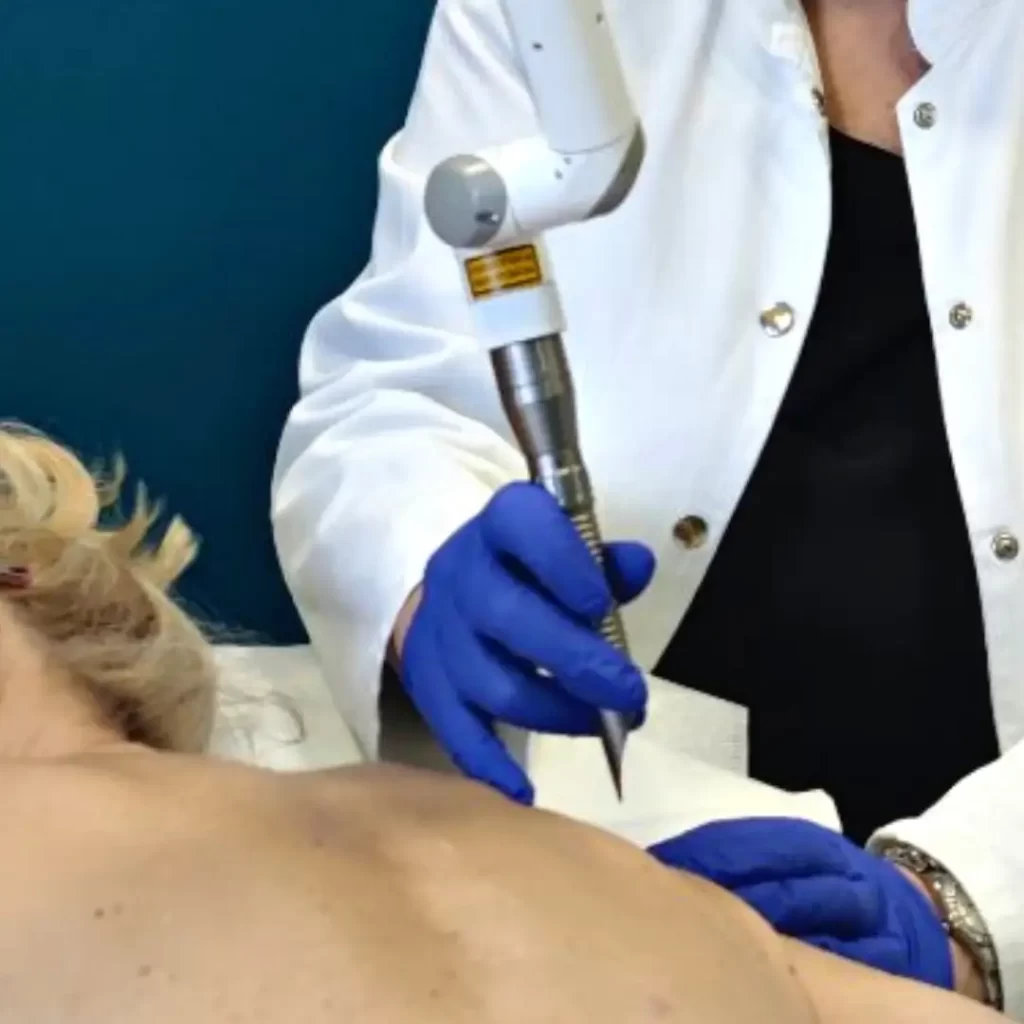
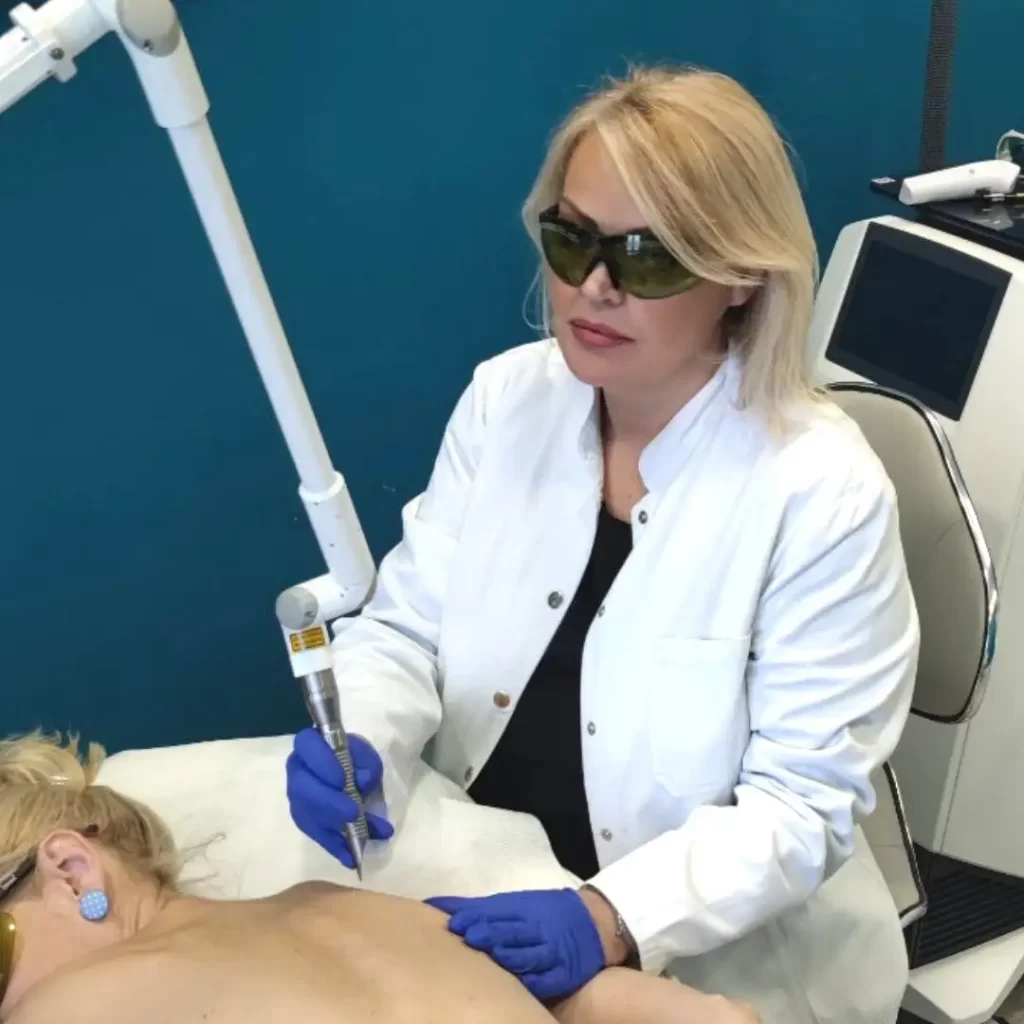
Treatment with this laser is
- safe,
- a minimally invasive procedure that uses the laser beam fractionation technique to make microscopic wounds deep in the skin,
- which allows the surface layer of the skin to be quickly renewed,
and the treated zones in the deeper layers of the dermis lead to the production of completely new collagen fibers with exceptional results in the removal of keratoses while simultaneously tightening the treated skin.
This laser laser ablates the part of the skin where keratosis is located, layer by layer.
What are the advantages of laser keratoses removal?
- The healing process is from 7 to 10 days,
- There are no side effects,
- There are no permanent side effects – such as scarring.
How long does laser keratoses removal take?
The procedure itself takes about half an hour.
Laser removal of keratoses experience:
According to a clinical study conducted at the Diva polyclinic, as many as 96.3% of patients are completely satisfied with the aesthetic results of laser keratoses removal.
Removal of keratoses - advice from a specialist doctor
The sooner the patient consults a doctor specializing in the removal of keratoses, the bigger and wider they are avoided.
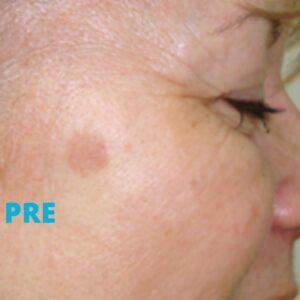
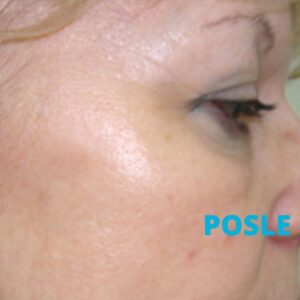
And what types of keratoses are there?
1. Seborrheic keratosis
Seborrheic keratoses were previously also known under the colloquial name sunny, that is, senile or senile keratosis. However, since they can also occur in younger people, these names are not completely adequate.
2. Solar lentigo:
3. Lichenoid keratosis:
An inflammatory phase that precedes the involution of some seborrheic keratoses and solar lentigines.
4. Stucco keratosis:
5. Dermatosis papulosa nigra:
6. Inverted follicular keratosis
This type of keratosis is a small, painless growth, up to 1 cm in diameter, grayish in color and with swirl-shaped keratinization.
Where do keratoses most often appear?
How common is keratosis?
The radio wave method is optimal for removing keratoses, because it has a lower number of recurrences compared to other techniques.
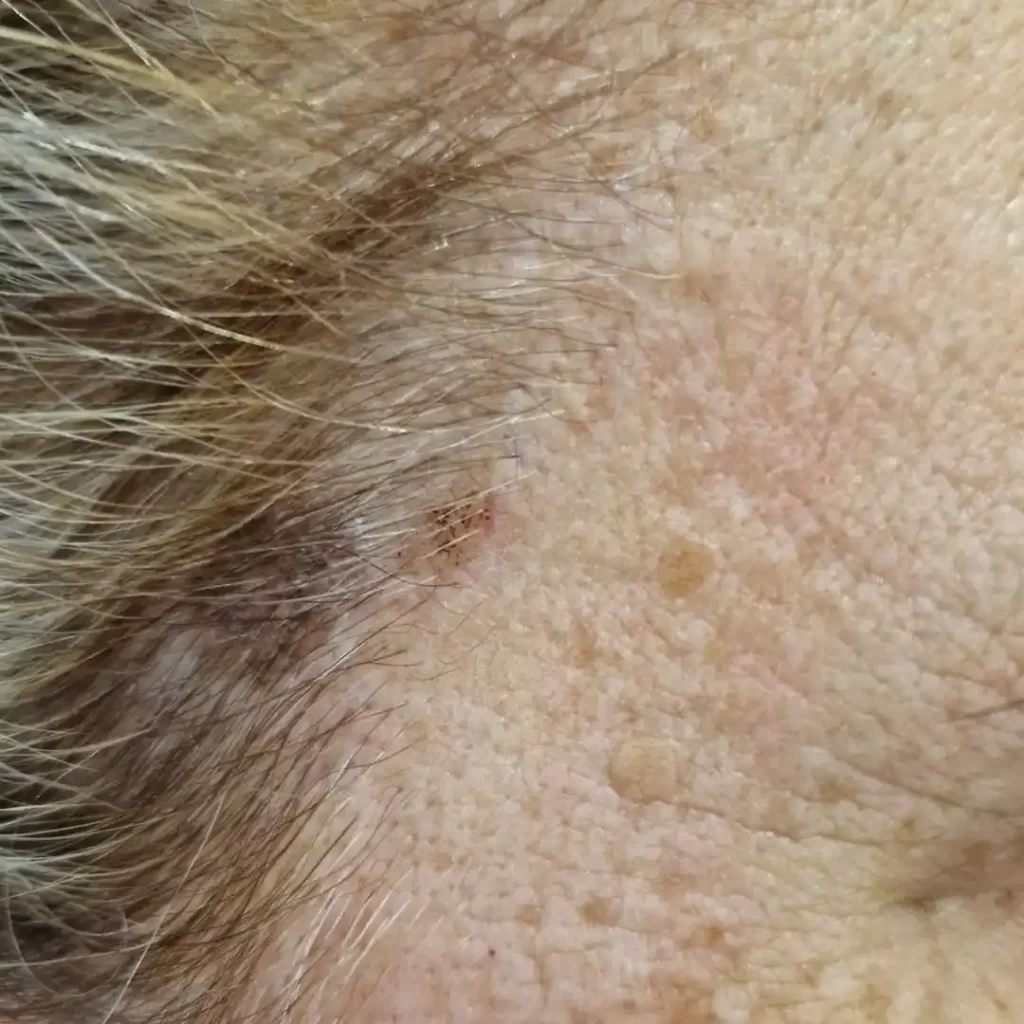
What is the cause of seborrheic keratosis?
- Eruptive seborrheic keratoses may accompany sunburn or dermatitis.
- Friction of the skin can be the reason why they appear in the folds of the body.
- A viral cause (eg human papillomavirus) is unlikely.
- Stable and clonal mutations or activation of FRFR3, PIK3CA, RAS, AKT1 and EGFR genes have been found in seborrheic keratoses.
- Seborrheic keratosis can arise from solar lentigium.
- FRFR3 mutations also occur in solar lentigines.
- Epidermal growth factor receptor inhibitors (used to treat cancer) often lead to an increase in verrucular (warty) keratoses.
How to recognize keratoses?
Seborrheic keratosis gradually develops and grows. Signs and symptoms can vary:
- In the beginning, these are round or oval plate changes, yellowish or brownish in color, smooth to the touch.
- These changes, from softer and pale yellowish, change over time to hard, raised and darkly colored warty changes.
- Usually, their size ranges from a few millimeters to a few centimeters. Then the keratoses acquire a rough, grainy surface, with a cracked appearance of the skin, and a greasy keratin mass can appear on them – scrum, which is easily removed.
- Melanin can be present in all layers of the epithelium, which is why patients often think that it is a mole that should not be touched. That is why they appear in the phase when multiple changes are widespread and harder, which certainly makes it difficult to remove keratosis and achieve a better aesthetic result.
- They can appear as clustered keratoses (ranging from one to multiple growths).
- Very small keratotic growths can also appear around the eyes or other regions of the face, which are also called dermatosis papulose nigra and are common on skin with a darker complexion.
- A symptom of keratosis can be itching in the places where they start to break out, as well as redness and wetness.



